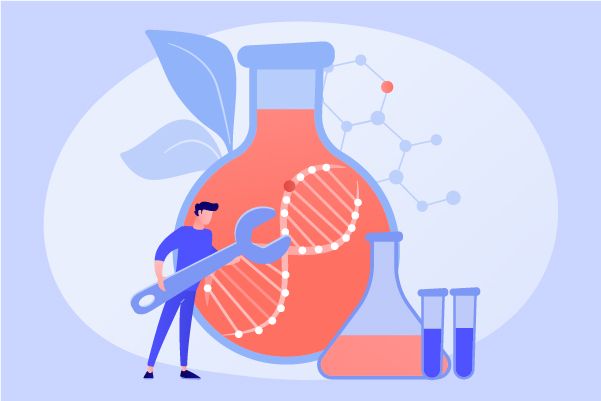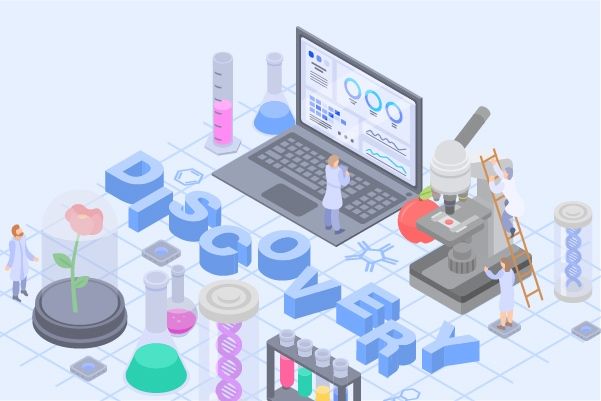Global first IL-15 drug approved! ImmunityBio's Anktiva receives FDA approval for the treatment of Bacillus Calmette-Guerin-unresponsive non-muscle invasive bladder cancer
On April 22, 2024, ImmunityBio announced that the FDA has approved Anktiva (N-803) in combination with Bacillus Calmette-Guérin (BCG) for the treatment of BCG-unresponsive non-muscle invasive bladder cancer (NMIBC) with carcinoma in situ (CIS), with or without papillary tumors. The drug is expected to be available in the United States by mid-May 2024.
Nogapendekin alfa inbakicept-pmln(N-803)
N-803 (nogapendekin alfa inbakicept-pmln) is an interleukin-15 (IL-15) superagonist complex composed of a mutated variant of IL-15 (IL-15N72D) fused with the IL-15Rα sushi domain and an IgG1 Fc fusion protein. The IL-15Rα sushi domain allows for activation of downstream signaling pathways without the requirement for trans-presentation, as is necessary for natural IL-15, while the IgG1-Fc fragment significantly extends the drug's half-life.
Previously, the FDA granted N-803 Fast Track designation and Breakthrough Therapy designation, and in October 2023, accepted the resubmission of the Biologics License Application (BLA) for N-803 in combination with BCG.
In a single-arm, multi-center Phase 2 trial, 77 patients with high-risk non-muscle invasive bladder cancer (NMIBC) who were unresponsive to BCG and who had undergone transurethral resection with or without Ta/T1 papillary lesions were enrolled; patients received N-803 induction followed by intravesical instillation of Bacillus Calmette-Guérin (BCG), with maintenance therapy lasting up to 37 months. For up to 2 years, tumor status was evaluated every three months via cystoscopy and urinary cytology, with biopsies performed (randomly or under cystoscopic guidance) within the first 6 months after treatment initiation.
The primary efficacy endpoints were the complete response (CR) at any time and the duration of complete response (DOR). CR is defined as a negative cystoscopy (with TURBT/biopsy where applicable) and negative urinary cytology. The results showed a CR rate of 62% (95 CI: 51, 73); 58% of patients with CR had a DOR of ≥12 months, and 40% had a DOR of ≥24 months.
The most common adverse reactions (≥15%) included laboratory abnormalities such as increased creatinine, dysuria, hematuria, urinary frequency, urinary urgency, urinary tract infections, elevated potassium, musculoskeletal pain, chills, and fever.
Beyond non-muscle-invasive bladder cancer (NMIBC), N-803 has also shown promising therapeutic potential in pancreatic cancer. At the 2022 ASCO GI, Immunity Bio revealed phase II data for N-803 combined with standard-of-care chemotherapy, albumin-bound paclitaxel, and PD-L1 t-haNK as a third-line treatment for pancreatic cancer. The results indicated a median overall survival (mOS) of 6.3 months, doubling compared to historical data. Regarding safety, grade 3 or higher adverse events mainly included anemia, neutropenia, and thrombocytopenia. Additionally, preclinical data published in the journal Science suggested that in combination with broadly neutralizing antibodies, N-803 might enable the immune system to control human immunodeficiency virus (HIV) without the need for antiretroviral therapy.
IL-15
IL-15, as a T cell growth factor, is mainly produced by monocytes and macrophages. It binds to the IL-15 receptor (IL-15R) on responsive cells, mediating the proliferation and activation of T cells, NK cells, and B cells, and inducing the generation of cytotoxic T lymphocytes (CTLs).
IL-15 principally employs two distinct mechanisms for signal delivery: cis-presentation and trans-presentation. In cis-presentation, IL-15 binds to the transmembrane or soluble forms of IL-15Rα before associating with IL-15Rβγ. In trans-presentation, IL-15Rα is expressed on the surface of IL-15 producing cells, such as dendritic cells and macrophages, delivering IL-15 in a trans manner to responder cells carrying the IL-15Rβ/γc receptor, such as NK or memory CD8+ T cells. This may play a key role in coordinating the innate and adaptive branches of the immune system.
The specific binding of IL-15 to its receptor IL-5R can activate the JAK-STAT5 signal transduction molecule, which then leads to the cascade activation of multiple signaling pathways including PI3K/Akt and Ras/Raf/MAPK, ultimately exerting its biological effects. Additionally, IL-15Rα can also shed from the membrane and exist in a free form after binding to IL-15, activating the IL-15Rβ/γc receptor at a distance.
Due to IL-15’s ability to promote the activation and proliferation of immune cells, it plays a very important role in immunotherapy. IL-15 does not induce apoptosis in activated T cells and can maintain the survival of memory T cells, thereby achieving the goal of long-term treatment. However, the application of IL-15 in immunotherapy also faces some challenges. For example, excessive secretion of IL-15 may lead to an over-activation of the immune system, which can induce inflammatory responses, autoimmune diseases, infectious diseases, and tumors.
Because the IL-15 signaling pathway requires the sushi domain of IL-15Rα, it is limited by the expression level of IL-15Rα within the body. Moreover, the short half-life of IL-15 (less than 1 hour in humans) and strict post-transcriptional regulation significantly limit IL-15's clinical applications. The most common strategies to address this include increasing the molecular size to reduce renal elimination, or fusion with the neonatal Fc receptor (FcRn). Additionally, considering IL-15's unique ability to maintain the homeostasis and proliferation of memory CD8+ T cells, applying it in CAR-T engineering also promises to achieve stronger antitumor efficacy.
According to incomplete statistics, there are currently only approximately 200 IL-15 drugs under research globally, with about 90 having entered the clinical stage. Apart from N-803, other drugs worth paying attention to include SOT101, a subcutaneous formulation developed by SOTIO, SHR-1501 by Jiangsu Hengrui Pharmaceuticals, ASKG315 by Aosaikang Pharmaceutical, and BJ-001 by BJ Bioscience.
Regarding Non-Muscle Invasive Bladder Cancer
Bladder Urothelial Carcinoma (UC) is the 13th most common cancer worldwide by incidence and is divided into two main categories: non-muscle invasive bladder cancer (NMIBC), which accounts for 70%, and muscle-invasive bladder cancer (MIBC), which accounts for 30%. The peak incidence age of this disease is between 50 and 70 years old, with the incidence rate of urothelial carcinoma in men being 3 to 4 times that in women.
In 2020, there were 516,000 cases of urothelial carcinoma globally, and it is projected to reach 586,000 by 2025 and 663,000 by 2030. In China, there were about 77,000 new cases of urothelial carcinoma in 2020, and the number is expected to rise to 91,000 by 2025 and to reach 106,000 by 2030.
NMIBC refers to bladder malignancies that are confined to the mucosal layer (Ta) and lamina propria (T1), with no invasion into the muscular layer. This includes Ta, T1, and Tis stages, with Ta accounting for 70%, T1 representing 20%, and Tis making up 10%. Based on the different risks of recurrence and prognosis, NMIBC is divided into low-risk NMIBC, intermediate-risk NMIBC, high-risk NMIBC, and very high-risk NMIBC.
Treatment options, intravesical instillation, and follow-up plans are chosen according to the grouping of risk levels. The standard treatment for NMIBC is transurethral resection of bladder tumor (TURBT). Due to the high recurrence rate of NMIBC postoperatively, adjuvant intravesical instillation therapy is recommended for all NMIBC patients. Commonly used chemotherapeutic agents for instillation include mitomycin, gemcitabine, and epirubicin, and there is no evidence that maintenance instillation schemes using different chemotherapy drugs significantly differ in effectiveness.
Despite guidelines recommending chemotherapy instillation and BCG intravesical therapy, about 50% of patients still experience tumor recurrence within five years. The standard treatment for patients after tumor recurrence is radical cystectomy, which makes patients lose their normal urine storage and voiding functions, severely affecting their quality of life and psychological health. Therefore, the development of new drugs is crucial for NMIBC patients who do not respond to chemotherapy and BCG.
Representative drugs approved in recent years include: In January 2020, the FDA approved pembrolizumab ("Drug K") as a monotherapy for treating BCG-unresponsive, high-risk NMIBC patients with CIS, with or without papillary tumors, who are ineligible for or have elected not to undergo cystectomy. In December 2022, the FDA approved Ferring's gene therapy, nadofaragene firadenovec-vncg (commercial name Adstiladrin), for treating high-risk NMIBC patients unresponsive to BCG therapy, with CIS, with or without papillary tumors.
ImmunityBio
ImmunityBio is a clinical-stage immunotherapy company headquartered in California, United States, dedicated to the development of a new generation of treatments that harness immunogenic mechanisms for the treatment of cancer and infectious diseases.
In January 2024, Oberland Capital provided ImmunityBio with up to $320 million in royalty monetization and equity financing, with total proceeds of $210 million due on December 29, 2023. This additional financing provides the company with significant financial resources to accelerate its commercialization efforts, in anticipation of regulatory approval, and to expand its product line in the broader field of urologic oncology. The raised funds will also support ongoing business operations and clinical trials, extending the indications of N-803 to multiple solid tumors.




